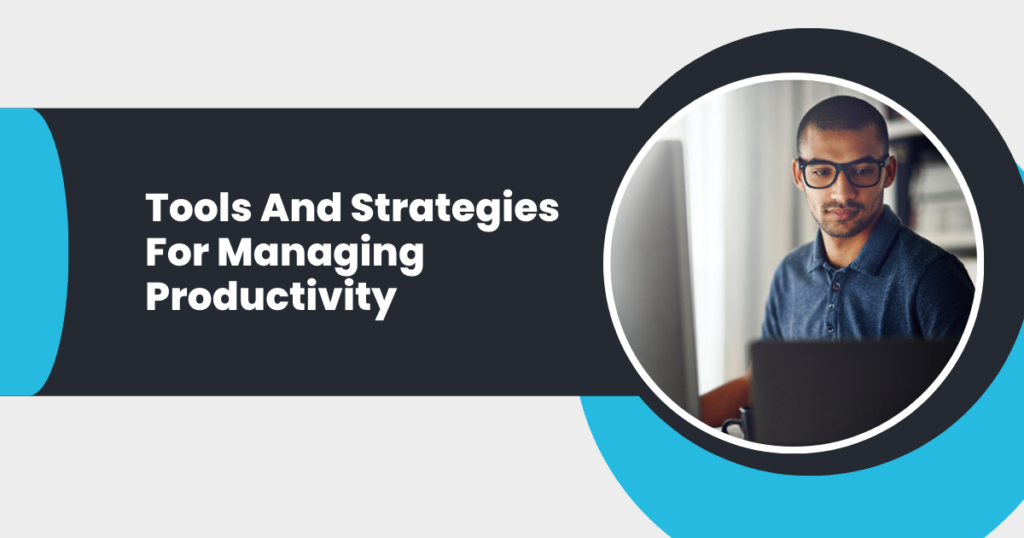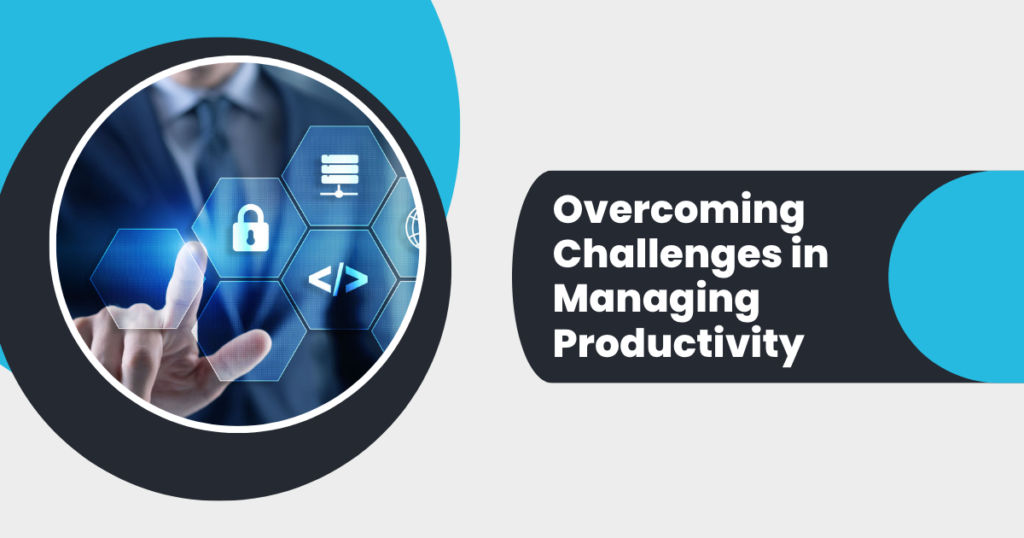
The Art of Managing Productivity in a Hybrid Work Environment: A Guide for Employers and Managers
Adapting to the new normal of remote work, organizations face unprecedented challenges in managing productivity in a hybrid workforce.
In fact, a report declares that only 20 to 25% of the workforce can work from home between 3-5 days a week without a loss of productivity. The infinitesimal pace at which the rate progresses prompts employers and managers to implement measures to sustain an optimal level of productivity.
This guide is packed with insights, strategies, and practical solutions to help you manage your team’s productivity and achieve your goals in a hybrid workforce. Read on to get the answers to all your productivity woes!
Understanding Productivity in a Hybrid Workforce

It’s important to understand how employees perform when working remotely and hybrid. Employers and managers need to assess the team’s productivity to ensure it remains optimal — even with half of the staff working from home or another location.
Identifying Factors That Affect Productivity in a Hybrid Workforce
Identifying factors that affect productivity in a hybrid workforce can be tricky; it’s difficult to determine the cause of any drop in performance.
The best strategy, in that case, is to look at the bigger picture before making assumptions—there are several factors that can impact productivity.
Employers and managers should consider if the shift to remote or hybrid work has caused changes in influencing performance variables. Motivation, communication, technology, workloads, and working hours are all key factors to consider here.
These shifts in the way we work can be supported when companies take on digital adoption software platforms. These platforms are becoming increasingly important as enablers of digital transformations in organizations.
If motivation is an issue, employers and managers should look into providing additional support with rewards for completing tasks or even introducing employee swag during onboarding. Similarly, implementing team-building activities or virtual meetings can encourage collaboration and communication.
Understanding Employee Needs And Preferences
Understanding employee needs and preferences is critical to managing productivity in a hybrid workforce. As an employer, you need to take the time to learn about remote and hybrid employees’ professional goals, expectations, challenges, and communication styles. Hence, they can create an environment where everyone can thrive.
This means providing the subordinates with the necessary resources to do their job well, such as the right technology and access to virtual team-building activities.
Managers should also be mindful of potential disparities in experience or access between remote and hybrid employees and find ways to bridge these gaps.
Moreover, employers must encourage open communication and feedback loops from all staff members. This could take the form of regular check-ins with each employee to discuss their progress, challenges, and goals.
Neal Taparia, founder of Play Minesweeper, adds, “You should also understand the personal needs and schedules of your employees. For example, some may need to pick up their kids in the afternoon. By accommodating workflows around their personal needs, you can set them up to be even more productive.”
Establishing Clear Expectations and Goals
Employers and managers need to maximize productivity and ensure their hybrid workforce reaches its full potential.
As a team manager, you must create specific, measurable goals for each team member. Establishing clear expectations and goals will help employees focus their efforts and energy in the right direction.
With clear goals, employees will better understand their roles, duties, timelines, and performance standards. And with the help of an online goal-setting software, managers can also monitor individual performance more effectively, as well as provide team members with a benchmark against which they can measure their success. They can create a culture of accountability, where everyone feels responsible for the team’s success.

Additionally, it’s important to provide employees with regular feedback. Hence, they know what they are doing right and where to improve.
Tools And Strategies For Managing Productivity

Effectively managing productivity requires the necessary tools, strategies, and resources at hand. This includes leveraging productivity-boosting technology and fostering effective communication.
Employers need to invest in technologies such as secure remote access solutions, productivity tracking tools, messaging platforms, and cloud-based collaboration tools. These are the must-have tools to run operational tasks and create a work environment conducive to productivity.
Providing Employees With Necessary Technology and Resources
Employers need to recognize the importance of providing their hybrid workforce with the necessary technology and resources. Access to web conferencing tools, project management systems and collaboration applications can help keep communication clear and consistent — particularly when employees are working remotely.
Team managers need to coordinate with the HR systems and arrange useful training sessions to bring everyone on the same page. This will help employees learn to use remote access solutions, productivity tracking tools, and messaging platforms.
However, the job is not done yet! Providing workers with tech support is also a crucial aspect. It ensures that the employee’s technology issues are quickly resolved.
If budget is a constraint in the business, a free VPN platform can be utilized to support safe browsing, secure transactions, and workflow management for the team.
Implementing Effective Communication Strategies
Effective communication is the fundamental key to the success of a team. Employees should be encouraged to communicate regularly with their peers, managers, and other stakeholders.
Employers can foster this culture of communication by providing employees with online forums, chatrooms, and other digital spaces where they can interact and share ideas.
Additionally, employers should cultivate an open and transparent environment where employees can share their thoughts and opinions. The communication protocols should also be well-defined and understood by all employees. This can help prevent misunderstanding, confusion, and frustration.
Offering Flexibility in Scheduling and Work Arrangements
Flexibility in scheduling and work arrangements can effectively build a healthy work environment conducive to productivity. This includes offering flexible hours or part-time schedules, allowing employees to work remotely on an as-needed basis, and setting up remote collaboration hubs.
By providing these sorts of options, employers can ensure that their hybrid workforce is engaged and productive while respecting their employees’ needs and preferences. Hence, employees can come together to share ideas and collaborate.
However, it is critical not to overdo this aspect and facilitate employees with unnecessary leniency, or it may backfire as a declining productivity graph.
Encouraging Teamwork and Collaboration
Effective teamwork and collaboration are foundational to uplifting the productivity graph. Encouraging teamwork and collaboration creates a healthy work environment, promotes a positive attitude, and inspires creativity and innovation.
When individuals come together and work towards a common goal, they can achieve far more than they could have done individually. Working together helps achieve the desired outcome, fosters a sense of community, and enhances relationships between team members.
This can be done through activities like remote team building or virtual happy hours. Additionally, providing resources such as video conferencing platforms or shared file storage solutions can bridge the gap between remote employees. It creates an environment where collaboration is encouraged.
Monitoring and Measuring Productivity
Inspection and monitoring are pivotal to keeping the momentum going in the workspace.
Employers need to monitor and measure the productivity of their hybrid workforce in order to ensure that they are staying on track. This can be done through employee performance management systems, allowing employers to track progress and compare employee performance across time periods.
Metrics such as hourly or daily productivity goals can help employers determine how their team is performing and make adjustments if necessary. By monitoring and measuring these metrics and KPIs, employers can ensure that their hybrid workforce meets expectations and stays productive.
Building a Productive Culture in a Hybrid Workforce

With a mix of on-site and remote work, managing a hybrid workforce brings unique challenges for leaders. One critical aspect of managing a hybrid workforce is building a productive culture that promotes employee engagement, collaboration, and accountability.
This requires a thoughtful approach to communication, collaboration tools, and leadership strategies that promote inclusivity and trust. Here are a few strategies that managers can adopt to create a workplace that embraces innovation, productivity, and engagement in a hybrid workforce:
Creating a Positive and Supportive Work Environment
One of the essential elements in building a productive culture in a hybrid workforce is creating a positive and supportive work environment. It strikes a sense of belonging and fosters a positive attitude among employees.
A positive and supportive workplace instills a sense of camaraderie and unity among employees. This atmosphere cultivates a positive attitude, which enhances productivity and improves employee well-being.
Employers must set clear expectations and provide feedback to create a positive work environment. This helps to establish trust and accountability between management and employees.
Recognizing and celebrating employee achievements also encourages a positive workplace culture, increasing job satisfaction and loyalty. Ultimately, a positive and supportive work environment is a worthy investment in the success and sustainability of an organization.
Fostering Employee Engagement and Motivation
Engagement and motivation are key drivers of productivity — especially in the context of hybrid workforces. Organizations can establish a positive work culture that boosts productivity and employee satisfaction by prioritizing employee engagement and motivation.
Engaged and motivated employees are more inclined to be productive and committed to their work. Employers can increase employee engagement by providing opportunities for growth and development and recognizing employees’ efforts. It creates a sense of purpose that aligns with the company’s mission and values.
Recognition is also an essential tool for promoting employee motivation. Employers can recognize employees’ achievements through rewards, public acknowledgments, or simple thank-you notes. Recognizing employees’ efforts can help build a sense of community and create a positive work culture.
Promoting Work-Life Balance and Mental Health
Maintaining a healthy work-life balance and mental well-being is crucial in a hybrid workforce. With the rise of remote work, it’s easy for work and personal life to blend, resulting in burnout and mental health concerns.
To address these challenges, employers should prioritize promoting work-life balance by setting achievable goals and expectations for their staff, providing flexibility, and encouraging regular breaks and self-care practices.
These measures can help employees feel more empowered and productive. This empowerment leads to a better work-life balance, improved mental health, and higher job satisfaction. These measures can help employees feel more empowered and productive.
This empowerment leads to a better work-life balance, improved mental health, and higher job satisfaction. Ultimately promoting a positive culture that values employees’ well-being and performance.
Recognizing and Rewarding High Performance
Recognizing and rewarding high performance is an effective way to motivate employees and improve productivity. When workers are recognized for their hard work and dedication, they feel empowered and ready to go the extra mile. Appreciation not only boosts their motivation and morale but also encourages them to continue performing at a high level.
Employers can offer financial incentives such as bonuses, stock options, or pay raises as a way of acknowledging their employees’ contributions. Additionally, offering opportunities for promotions and advancement within the company can also serve as a motivating factor.
Acknowledging employees’ achievements through public recognition or a sweet and simple thank you note can go a long way. It creates a positive work environment and boosts overall productivity.
Overcoming Challenges in Managing Productivity

Managing productivity in a hybrid workforce comes with its own set of challenges. Employers must address issues related to remote work, communication barriers, distractions, and time management to ensure their employees remain productive and engaged.
Employers are advised to adopt new strategies and tools to ensure employees remain productive and engaged, regardless of location. Here are some effective tips for overcoming the challenges of managing productivity in a hybrid workforce:
Addressing Issues Related To Remote Work
The rise of remote work has brought a myriad of challenges for both employees and managers. However, managers can overcome these obstacles and maintain high productivity levels with the right strategies in place.
One of the most powerful ways to tackle issues related to remote work is to establish clear expectations and goals. Managers should communicate regularly with their remote teams to ensure every team member stands on the same ground and works towards the same objectives. This helps minimize confusion and ensures everyone is focused on the most important tasks.
Additionally, it is important to establish a culture of accountability and trust within remote teams. Managers should encourage employees to take ownership of their work and hold themselves accountable for meeting deadlines and achieving their goals. At the same time, managers should trust their employees to work independently and provide support and guidance when needed.
Handling Communication Barriers and Misunderstandings
In a hybrid workforce, effective communication is essential for ensuring everyone is on the same page and working towards common goals. However, communication barriers and misunderstandings can arise, leading to confusion and decreased productivity.
To mitigate these issues, employers should address communication barriers and encourage open communication among employees. This might include providing clear instructions and using collaboration tools such as video conferencing, telecommunication, and instant messaging. This use of technology creates a culture of transparency and collaboration in the workspace.
By prioritizing communication and taking proactive steps to address misunderstandings, employers can help their teams work more effectively and achieve better results.
Dealing With Distractions and Time Management
In today’s hybrid work environment, distractions and time management issues can hinder an employee’s productivity. To navigate this issue, employers can take steps to assist their employees in managing their time effectively.
One approach is to set realistic deadlines that provide enough time to complete tasks without causing undue stress. Another strategy is prioritizing work assignments so that the most critical projects receive the most attention.
Providing support, resources, and time management training can also benefit employees. Ultimately, by helping employees manage their time better and reduce distractions, employers can enhance productivity and promote a healthier work-life balance.
Managing Workload and Avoiding Burnout
Managing workload and avoiding burnout is becoming increasingly important in today’s hybrid workforce, where employees often juggle multiple responsibilities simultaneously.
Employers need to be vigilant in monitoring their employees’ workload to ensure that it is manageable and doesn’t lead to burnout. This can involve reassigning tasks, providing additional support and training, and prioritizing workloads effectively.
Additionally, supporting employees’ mental health and providing resources for stress management can be crucial in helping them to manage their workload and avoid burnout. By prioritizing these efforts, employers can create a healthy and sustainable work environment that benefits both the employees and the company as a whole.
Final Word
Managing productivity in a hybrid workforce demands a proactive and strategic approach from employers. The key to success lies in creating a conducive work environment that fosters employee engagement, supports work-life balance, and recognizes high performance.
While the challenges of remote work, communication barriers, and distractions can seem daunting, HR managers can leverage the strategies outlined in this article to build a productive culture that benefits both the organization and its employees.
With the right mindset and tools, employers can successfully navigate the complexities of managing a hybrid workforce and achieve their productivity goals.

